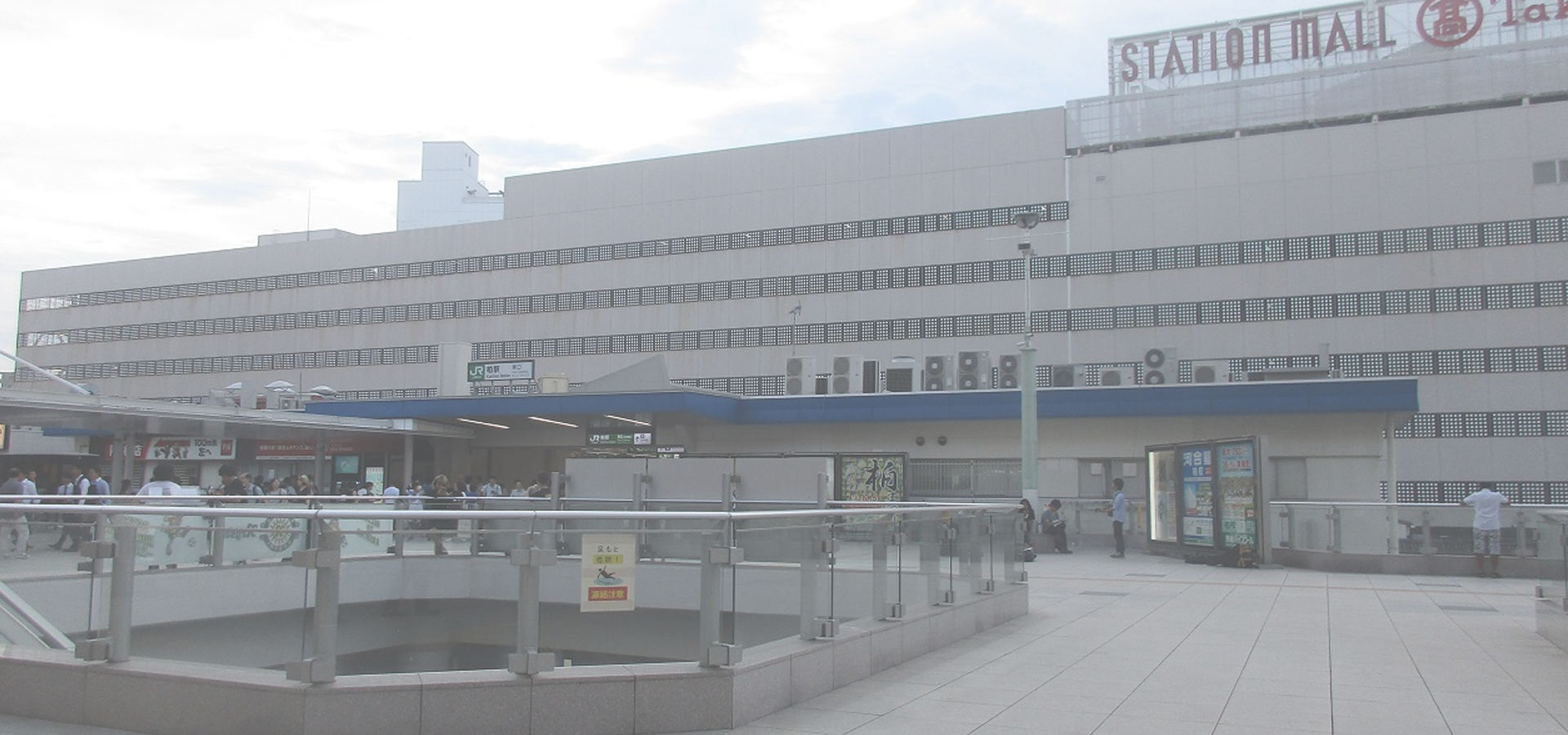Kashiwa, Chiba Prefecture, Kantō Region, Japan
🇯🇵 Kashiwa (柏市) is a city located in Chiba Prefecture, Japan. The name of the city is written with a single kanji character: 柏, a reference to Quercus dentata, commonly known in English as the Japanese emperor oak or daimyo oak.
Geography Kashiwa is located on the Shimōsa Plateau in the far north-western corner of Chiba Prefecture, about 30 km from the prefectural capital at Chiba and 25 to 35 km from central Tokyo. It is separated from Ibaraki Prefecture to the north by the Tone River. Located on the Kanto Plain, the city is flat, with an elevation of between 5 and 32 meters above sea level.
Neighboring municipalities • Chiba Prefecture ◦ Matsudo; ◦ Abiko; ◦ Inzai; ◦ Kamagaya; ◦ Noda; ◦ Shiroi; ◦ Nagareyama. • Ibaraki Prefecture ◦ Toride; ◦ Moriya.
History Kashiwa has been settled since ancient times, and was historically part of Shimōsa Province. The area around Kashiwa was the site of the Battle of Sakainehara in 1478 early in the Sengoku period (1467 – 1573). During the Edo period (1603 – 1868), the area was tenryō territory controlled directly by the Tokugawa shogunate. The shogunate established a number of horse ranches which provided war horses for the army of the shogunate. The Tokugawa shogunate put much effort into draining the marshy areas of Lake Tega (Lake Teganuma) during the Edo period as part of large-scale land reclamation carried out across Japan. Kashiwa was developed as a post station on the Mito Kaidō, which connected the capitol at Edo with Mito in present-day Ibaraki Prefecture.
Modern history After the Meiji Restoration in 1868, Kashiwa Village was created in Chiba Prefecture on October 1, 1889 with the establishment of the modern municipalities system. Kashiwa was connected to Tokyo by rail in 1896, and rail construction during the Meiji period (1868 – 1912) established the area as a commercial center. Kashiwa became a town on September 15, 1926. Kashiwa, like much of northern Chiba Prefecture, saw the development of numerous military installations in the 1930s, notably after the Mukden Incident in 1931. The Imperial Japanese Army established Kashiwa Air Field and Kashiwa Military Hospital, and Kashiwa became a military town. The air field was abandoned after the end of World War II, but the hospital continues to exist as the Kashiwa Public Hospital.
On September 1, 1954, Kashiwa absorbed neighboring Kogane Town and Tsuchi and Tanaka villages to form the new city of Tokatsu (東葛市, Tokatsu-shi). However, many politicians in Kogane Town were vehemently opposed to the merger, and forced its dissolution on October 15, 1954 with most of former Kogane Town merging with Matsudo city instead. On November 1, 1954, Fuse Village broke away from Tokatsu, eventually joining Abiko Town to form the city of Abiko. The remaining portion of Tokatsu was renamed Kashiwa on November 15, 1954. On December 25, 1955 a fire of unknown origin destroyed the former Kashiwa City Hall, and burned down most of the centre of the city. In the 1960s, Kashiwa was designated for reconstruction with a special fund from the central government, which included Japan's first pedestrian decks, completed at Kashiwa Station in 1973. Also during this period, new town developments greatly expanded the city's population.
On April 1, 2008, Kashiwa was designated as a core city, with increased local autonomy.
Government Kashiwa has a mayor-council form of government with a directly elected mayor and a unicameral city council of 36 members. Kashiwa contributes five members to the Chiba Prefectural Assembly. In terms of national politics, the city is divided between the Chiba 8th district and the Chiba 13th district of the lower house of the Diet of Japan.
Economy Kashiwa is a regional commercial centre and a bedroom community for nearby Chiba and Tokyo. Due to its good transportation connection with Tokyo, an estimated 42.3% of the working population (2015 census) commute to Tokyo for work. The city has a mixed industrial base, with food processing industries forming an important portion of the economy. Nikka Whisky Distilling, Asahi Soft Drinks, and Ito Ham all have production facilities in Kashiwa. There is some residual agriculture of turnips, onions and spinach.
Universities • Chiba University, Kashiwa Campus • University of Tokyo, Kashiwa Campus • Reitaku University • Nishōgakusha University • Kaichi International University.
Sport Kashiwa is home to the professional football team Kashiwa Reysol.
Transport: Rail JR East – Jōban Line • Minami-Kashiwa - Kashiwa - Kita-Kashiwa
Tōbu Railway - Tobu Urban Park Line • Toyoshiki - Kashiwa - Shin-Kashiwa - Masuo - Sakasai - Takayanagi
Metropolitan Intercity Railway Company - Tsukuba Express • Kashiwanoha-campus - Kashiwa-Tanaka
Transport: Road • Jōban Expressway • National Route 6 • National Route 16 • National Route 294.
Kashiwa, Chiba Prefecture, Kantō Region, Japan

Kashiwa has a population of over 433,436 people. Kashiwa also forms part of the wider Chiba Prefecture which has a population of over 6,278,060 people.
To set up a UBI Lab for Kashiwa see: https://www.ubilabnetwork.org Twitter: https://twitter.com/UBILabNetwork
Twin Towns, Sister Cities Kashiwa has links with:
🇯🇵 Ayase, Japan 🇦🇺 Camden, Australia 🇨🇳 Chengde, China 🇬🇺 Guam, Guam 🇺🇸 Torrance, USA 🇯🇵 Tsugaru, Japan🇯🇵 Toride City 140.05
🇯🇵 Nasushiobara 140.056
Locations Near: Kashiwa 139.967,35.8667
🇯🇵 Toride City 140.05,35.9 d: 8.3
🇯🇵 Kamagaya 140.005,35.774 d: 10.9
🇯🇵 Matsudo 139.9,35.783 d: 11.1
🇯🇵 Misato 139.867,35.817 d: 10.6
🇯🇵 Yoshikawa 139.85,35.883 d: 10.7
🇯🇵 Yashio 139.842,35.82 d: 12.4
🇯🇵 Ichikawa 139.933,35.72 d: 16.6
Antipodal to: Kashiwa -40.033,-35.867
🇨🇱 La Reina -33.45,-33.45 d: 19355.9
🇧🇷 Tubarão -49,-28.467 d: 18837.4
🇧🇷 Criciúma -49.372,-28.678 d: 18828.9
🇧🇷 São José -48.617,-27.6 d: 18789.9
🇧🇷 Palhoça -48.667,-27.633 d: 18789.6
🇧🇷 Biguaçu -48.667,-27.5 d: 18778.1
🇧🇷 Itapema -48.612,-27.091 d: 18745.8
🇧🇷 Balneário Camboriú -48.633,-26.983 d: 18735.1